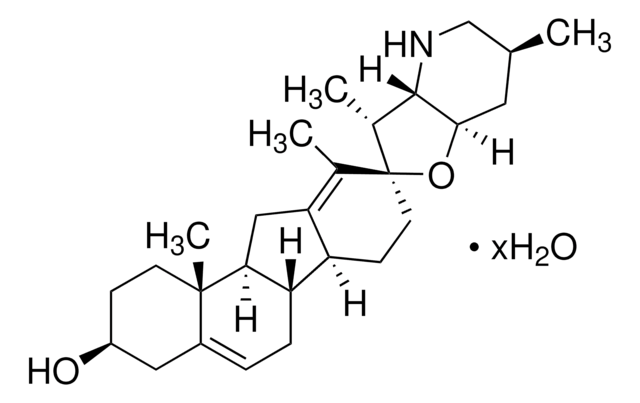Kluczowe dokumenty
R2650
Monoclonal Anti-Rac antibody produced in mouse
clone 23A8, purified immunoglobulin, buffered aqueous solution
About This Item
Polecane produkty
pochodzenie biologiczne
mouse
Poziom jakości
białko sprzężone
unconjugated
forma przeciwciała
purified immunoglobulin
rodzaj przeciwciała
primary antibodies
klon
23A8, monoclonal
Formularz
buffered aqueous solution
masa cząsteczkowa
antigen 21 kDa
reaktywność gatunkowa
rat, human, mouse
metody
immunohistochemistry (frozen sections): suitable
immunoprecipitation (IP): suitable
western blot: 0.5-2.0 μg/mL using rat brain microsomal protein preparation
izotyp
IgG
numer dostępu UniProt
Warunki transportu
dry ice
temp. przechowywania
−20°C
docelowa modyfikacja potranslacyjna
unmodified
informacje o genach
human ... ARHGEF6(9459)
mouse ... Arhgef6(73341)
rat ... Arhgef6(363509)
Specyficzność
Immunogen
Postać fizyczna
Uwaga dotycząca przygotowania
Oświadczenie o zrzeczeniu się odpowiedzialności
Nie możesz znaleźć właściwego produktu?
Wypróbuj nasz Narzędzie selektora produktów.
Kod klasy składowania
10 - Combustible liquids
Klasa zagrożenia wodnego (WGK)
WGK 1
Temperatura zapłonu (°F)
Not applicable
Temperatura zapłonu (°C)
Not applicable
Wybierz jedną z najnowszych wersji:
Masz już ten produkt?
Dokumenty związane z niedawno zakupionymi produktami zostały zamieszczone w Bibliotece dokumentów.
Nasz zespół naukowców ma doświadczenie we wszystkich obszarach badań, w tym w naukach przyrodniczych, materiałoznawstwie, syntezie chemicznej, chromatografii, analityce i wielu innych dziedzinach.
Skontaktuj się z zespołem ds. pomocy technicznej




